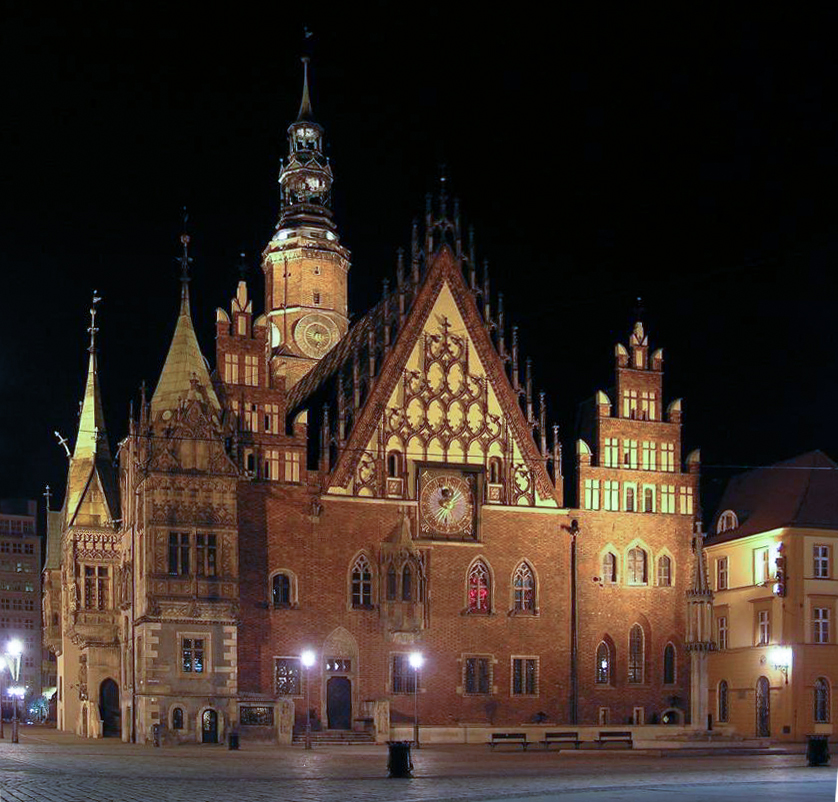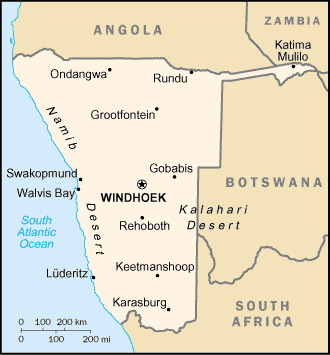|
Bogatynia
Bogatynia (; German: ''Reichenau in Sachsen'') is a town in Zgorzelec County, Lower Silesian Voivodeship, in south-western Poland. As of December 2021, the town has a population of 16,460. Geography The municipal area forms Poland's "Turoszów panhandle" ( pl, Worek Turoszowski) between the Czech town of Frýdlant in the east and the German town of Zittau in the west. To the southwest, the tripoint of the Czech, German, and Polish borders is located on the Neisse River. The town lies approximately south of Zgorzelec, and west of the regional capital Wrocław. The town has an area of . History The settlement of ''Richnow'' (modern German: ''Reichenau'', i.e. 'rich vale') in the historical region of Upper Lusatia was first mentioned in a 1262 deed, then a possession of Cistercian St. Marienthal Abbey near Ostritz. It prospered from its location on an important trade route connecting Dresden, residence of the Meissen margraves, with Świdnica in Silesia. Initially a possessi ... [...More Info...] [...Related Items...] OR: [Wikipedia] [Google] [Baidu] |
Gmina Bogatynia
__NOTOC__ Gmina Bogatynia is an urban-rural gmina (administrative district) in Zgorzelec County, Lower Silesian Voivodeship, in south-western Poland, bordering both the Czech Republic and Germany. Its seat is the town of Bogatynia, which lies approximately south of Zgorzelec, and west of the regional capital Wrocław. The gmina covers an area of , and as of 2019 its total population is 23,083. Neighbouring gminas Gmina Bogatynia is bordered by the town of Zawidów and the gmina of Zgorzelec. It also borders the Czech Republic and Germany. Villages Apart from the town of Bogatynia, the gmina contains the villages of Białopole, Bratków, Działoszyn, Jasna Góra, Kopaczów, Krzewina, Lutogniewice, Opolno-Zdrój, Porajów, Posada, Rybarzowice, Sieniawka, Wolanów and Wyszków. Twin towns – sister cities Gmina Bogatynia is twinned with: * Hrádek nad Nisou, Czech Republic * Zittau, Germany References {{Authority control Bogatynia Bogatynia (; German: ''Reic ... [...More Info...] [...Related Items...] OR: [Wikipedia] [Google] [Baidu] |
Zgorzelec County
__NOTOC__ Zgorzelec County ( pl, powiat zgorzelecki) is a unit of territorial administration and local government (powiat) in Lower Silesian Voivodeship, Poland. It came into being on January 1, 1999, as a result of the Polish local government reforms passed in 1998. It is situated in the extreme south-west of Poland, bordering both Germany and the Czech Republic. The county covers an area of . Its administrative seat is Zgorzelec, on the German border; the other towns in the county are Bogatynia, Pieńsk, Zawidów and Węgliniec. As of 2019 the total population of the county is 89,612. The most populated towns are Zgorzelec with 30,374 inhabitants and Bogatynia with 17,436 inhabitants. Neighbouring counties Zgorzelec County is bordered by Żary County and Żagań County to the north, and Bolesławiec County and Lubań County to the east. It also borders the Czech Republic to the south and Germany Germany, officially the Federal Republic of Germany (FRG),, is a cou ... [...More Info...] [...Related Items...] OR: [Wikipedia] [Google] [Baidu] |
Zittau
Zittau ( hsb, Žitawa, dsb, Žytawa, pl, Żytawa, cs, Žitava, Upper Lusatian Dialect: ''Sitte''; from Slavic "''rye''" (Upper Sorbian and Czech: ''žito'', Lower Sorbian: ''žyto'', Polish: ''żyto'')) is the southeasternmost city in the German state of Saxony, and is located in the district of Görlitz, Germany's easternmost district. It has a population of around 25,000, and is one of the most important cities in the region of Lusatia (Upper Lusatia). The inner city of Zittau still shows its original beauty with many houses from several architectural periods: the famous town hall built in an Italian style, the church of St John and the stables (''Salzhaus'') with its medieval heritage. This multi-storied building is one of the oldest of its kind in Germany. Geography Zittau sits on the Mandau River, while the Lusatian Neisse, which forms the border with Poland, touches the city in the east. The confluence of both rivers is located in the southeast of the city. Further sou ... [...More Info...] [...Related Items...] OR: [Wikipedia] [Google] [Baidu] |
Lower Silesian Voivodeship
Lower Silesian Voivodeship, or Lower Silesia Province, in southwestern Poland, is one of the 16 voivodeships (provinces) into which Poland is divided. The voivodeship was created on 1 January 1999 out of the former Wrocław, Legnica, Wałbrzych and Jelenia Góra Voivodeships, following the Polish local government reforms adopted in 1998. It covers an area of , and has a total population of 2,899,986. It is one of the richest provinces in Poland as it has valuable natural resources such as copper, silver, gold, brown coal and rock materials (inter alia granite, basalt, gabbro, diabase, amphibolite, porphyry, gneiss, serpentinite, sandstone, greywacke, limestone, dolomite, bentonite, kaolinite, clay, aggregate), which are exploited by the biggest enterprises. Its well developed and varied industries attract both domestic and foreign investors. Its capital and largest city is Wrocław, situated on the Oder River. It is one of Poland's largest and most dynamic ci ... [...More Info...] [...Related Items...] OR: [Wikipedia] [Google] [Baidu] |
Voivodeship Road
According to classes and categories of public roads in Poland, a voivodeship road ( pl, droga wojewódzka) is a category of roads one step below national roads National may refer to: Common uses * Nation or country ** Nationality – a ''national'' is a person who is subject to a nation, regardless of whether the person has full rights as a citizen Places in the United States * National, Maryland, ce ... in importance. The roads are numbered from 100 to 993. Total length of voivodeship roads in Poland is of which are unpaved (2008).Transport – activity results in 2008 , Główny Urząd Statystyczny List of voivodeship roads Current list ...[...More Info...] [...Related Items...] OR: [Wikipedia] [Google] [Baidu] |
Upper Lusatia
Upper Lusatia (german: Oberlausitz ; hsb, Hornja Łužica ; dsb, Górna Łužyca; szl, Gōrnŏ Łużyca; pl, Łużyce Górne or ''Milsko''; cz, Horní Lužice) is a historical region in Germany and Poland. Along with Lower Lusatia to the north, it makes up the region of Lusatia, named after the Slavic ''Lusici'' tribe. Both parts of Lusatia are home to the West Slavic minority group of the Sorbs. The major part of Upper Lusatia is part of the German federal state of Saxony, roughly comprising Bautzen district and Görlitz district. The northwestern extremity, around Ruhland and Tettau, is incorporated into the Oberspreewald-Lausitz district of the state of Brandenburg. The eastern part of Upper Lusatia is in Poland, east of the Neisse (''Nysa'') river, in Lower Silesian Voivodeship. A small strip of land in the north around Łęknica is incorporated into Lubusz Voivodeship, along with the Polish part of Lower Lusatia. The historic capital of Upper Lusatia is ... [...More Info...] [...Related Items...] OR: [Wikipedia] [Google] [Baidu] |
Salient (geography)
A salient (also known as a panhandle or bootheel) is an elongated protrusion of a geopolitical entity, such as a subnational entity or a sovereign state. While similar to a peninsula in shape, a salient is most often not surrounded by water on three sides. Instead, it has a land border on at least two sides and extends from the larger geographical body of the administrative unit. In American English, the term panhandle is often used to describe a relatively long and narrow salient, such as the westernmost extensions of Florida and Oklahoma. Another term is bootheel, used for the Missouri Bootheel and New Mexico Bootheel areas. Origin The term ''salient'' is derived from military salients. The term "panhandle" derives from the analogous part of a cooking pan, and its use is generally confined to North America. The salient shape can be the result of arbitrarily drawn international or subnational boundaries, though the location of administrative borders can also take into acc ... [...More Info...] [...Related Items...] OR: [Wikipedia] [Google] [Baidu] |
Lusatian Neisse
The Lusatian Neisse (german: Lausitzer Neiße; pl, Nysa Łużycka; cs, Lužická Nisa; Upper Sorbian: ''Łužiska Nysa''; Lower Sorbian: ''Łužyska Nysa''), or Western Neisse, is a river in northern Central Europe.''Neisse River'' at www.britannica.com. Retrieved 4 Feb 2011. at http://eagri.cz/public. Retrieved 4 Feb 2011. It rises in the Jizera Mountains, near Nová Ves nad Nisou, at the [...More Info...] [...Related Items...] OR: [Wikipedia] [Google] [Baidu] |
Trade Route
A trade route is a logistical network identified as a series of pathways and stoppages used for the commercial transport of cargo. The term can also be used to refer to trade over bodies of water. Allowing goods to reach distant markets, a single trade route contains long-distance arteries, which may further be connected to smaller networks of commercial and noncommercial transportation routes. Among notable trade routes was the Amber Road, which served as a dependable network for long-distance trade. Maritime trade along the Spice Route became prominent during the Middle Ages, when nations resorted to military means for control of this influential route. During the Middle Ages, organizations such as the Hanseatic League, aimed at protecting interests of the merchants and trade became increasingly prominent. In modern times, commercial activity shifted from the major trade routes of the Old World to newer routes between modern nation-states. This activity was sometimes ... [...More Info...] [...Related Items...] OR: [Wikipedia] [Google] [Baidu] |
Ostritz
Ostritz (, hsb, Wostrowc) is a town in the district Görlitz, in Saxony, Germany. It is situated on the border with Poland, on the left bank of the Lusatian Neisse, 16 km south of Görlitz. It was the scene of a small battle in the Seven Years' War, described in a contemporary journal as follows: ''On 31st December 1756 a picket of Prince Heinrich's Regiment under the command of Major Heinrich von Blumenthal, which had been sent out from Zittau to Ostritz, was attacked by 500 Croats who, notwithstanding their numerical superiority were thoroughly beaten off. The Croats got right into the town and set fire to some houses, but the fires were put out. The most serious loss on the Prussian side was the brave Major von Blumenthal, who fell right at the beginning of the action.'' In recent years, the town has become known for its efforts in recycling and ecological renewable energy. It is also located next to the thirteenth century Cistercian nunnery, St. Marienthal Abbey ... [...More Info...] [...Related Items...] OR: [Wikipedia] [Google] [Baidu] |
Germany
Germany, officially the Federal Republic of Germany (FRG),, is a country in Central Europe. It is the most populous member state of the European Union. Germany lies between the Baltic and North Sea to the north and the Alps to the south. Its 16 constituent states have a total population of over 84 million in an area of . It borders Denmark to the north, Poland and Czechia to the east, Austria and Switzerland to the south, and France, Luxembourg, Belgium, and the Netherlands to the west. The nation's capital and most populous city is Berlin and its main financial centre is Frankfurt; the largest urban area is the Ruhr. Settlement in what is now Germany began in the Lower Paleolithic, with various tribes inhabiting it from the Neolithic onward, chiefly the Celts. Various Germanic tribes have inhabited the northern parts of modern Germany since classical antiquity. A region named Germania was documented before AD 100. In 962, the Kingdom of Germany formed the ... [...More Info...] [...Related Items...] OR: [Wikipedia] [Google] [Baidu] |



